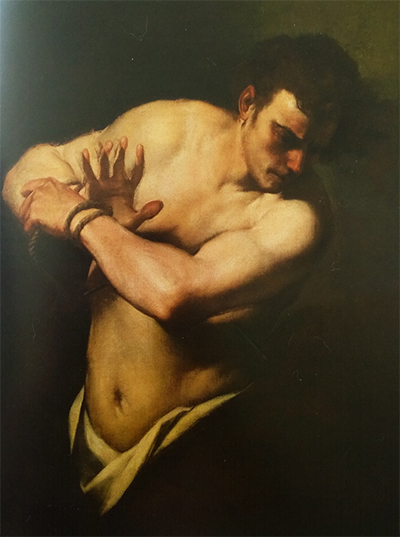Saint Sebastian is a sculpture by Bernini that was created around 1617-1618 from marble. Its subject, Saint Sebastian, was a Christian martyr and he is depicted fastened to a tree with his body peppered with arrows.
The sculpture itself is smaller than life sized and at the moment it is on display in Madrid at the Museo Thyssen-Bornemisza, though it is part of a private collection owned by Carmen Cervera. The sculpture was initially commissioned or acquired by Cardinal Maffeo Barberini, who was Bernini's benefactor, and who became pope in 1623 under the title Urban VIII.
It was first thought to have been created for the Barberini family chapel in Sant'Andrea della Valle which was built on the spot where Saint Sebastian's body had been recovered. From there it was shifted to the Palace of Cardinal Maffeo Barberini, then to the family home where it was first recorded in an inventory on the Via delle Quattro Fontane. From there it came to be owned by Cardinal Francesco Barberini (Maffeo's nephew) where it stayed in the family's possession until 1935. It was then acquired, along with a collection of paintings, by Heinrich Thyssen-Bornemisza.
The sculpture has been able to be dated fairly accurately due to a document that records a payment of 50 escudos made to Gian Lorenzo's father from Maffeo Barberini on December 29, 1617. This puts the sculpture on a timeline between the Saint Lawrence on the Gridiron and the the group of Anchises, Aeneas, and Ascanius which is held in Rome, in the Galleria Borghese. With this piece it appears Bernini found inspiration from the Michaelangelo's works and the Passion of the Christ. Some have said it is based on two pieces found in the Museo dell’Opera del Duomo and the Vatican Pieta.
Saint Sebastian was said to have been born in Gaul and was a Roman soldier who was killed in Rome during the reign of Diocletian for his attempts at spreading Christianity. He was tied to the trunk of a tree by other soldiers and shot with arrows. Despite this, he survived his wounds and was treated by Saint Irene and her companions who had found him. He then presented himself to Diocletian who then executed him in the hippodrome and his body thrown into the Cloaca Maxima where his remains were found by Saint Lucy and buried. Due to his connection with Rome, Saint Sebastian is the third patron saint of the city after Peter and Paul.
This sculpture depicts the time after Saint Sebastian has been filled with arrows and just before his discovery by Saint Irene, where he had been left to die. Bernini has used the tree trunk to hold up the body and the sculpture is a study of transition from life to death. Bernini clearly made an in-depth study of the time between life and death which can be seen in the handling of the figure's calm expression, and the tensing of the muscles and veins.




